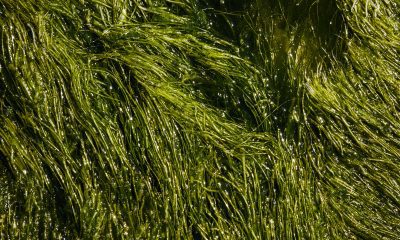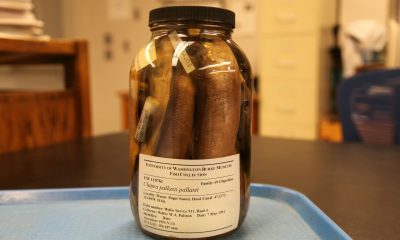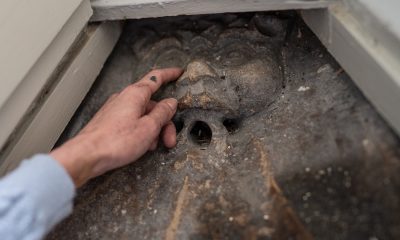By Gwyn Wright via SWNS
The first ever sound recording of tiny tornadoes on Mars called dust devils has been made by scientists.
It is the first ever audio recording of a whirlwind on another planet.
A team from NASA and the National Higher French Institute of Aeronautics used the rover Perseverance to make the recording on the red planet.
The rover’s "head" contains advanced remote sensing instruments with a wide range of spectrometers, cameras and the microphone.
The microphone is only on for around three minutes every couple of days and the team say they were lucky to get the recording.
They have found almost 100 dust devils in the Jezero Crater where Perseverance landed but this is the first time the microphone was on when one passed over the rover.
The recording, alongside air pressure readings and time-lapse photography, help scientists understand the weather and atmosphere on Mars.
d
via GIPHY
Professor Roger Wiens, who leads the instrument team that made the discovery said: “We can learn a lot more using sound than we can with some of the other tools.
“They take readings at regular intervals.
“The microphone lets us sample, not quite at the speed of sound, but nearly 100,000 times a second.
“It helps us get a stronger sense of what Mars is like.
“We could watch the pressure drop, listen to the wind, then have a little bit of silence that is the eye of the tiny storm, and then hear the wind again and watch the pressure rise.
“It all happened in a few seconds. The wind is fast — about 25 miles per hour, but about what you would see in a dust devil on Earth.
“The difference is that the air pressure on Mars is so much lower that the winds, while just as fast, push with about one per cent of the pressure the same speed of wind would have back on Earth.
“It's not a powerful wind, but clearly enough to loft particles of grit into the air to make a dust devil.”
The findings suggest future astronauts won’t need to worry about gale force winds blowing down antennas or habitats and the breezes may even have some benefits.
The wind blowing grit off other rovers may be what helped may be what allowed them to last so much longer.
Wiens, who works at Purdue University in Indiana, added: “Just like Earth, there is different weather in different areas on Mars.
“Using all of our instruments and tools, especially the microphone, helps us get a concrete sense of what it would be like to be on Mars.”
The findings were published in the journal Nature Communications.

 Food & Drink1 week ago
Food & Drink1 week ago
 Broadcast1 week ago
Broadcast1 week ago
 Parenting22 hours ago
Parenting22 hours ago
 Broadcast3 days ago
Broadcast3 days ago
 Broadcast1 week ago
Broadcast1 week ago
 Broadcast1 week ago
Broadcast1 week ago
 Funny1 week ago
Funny1 week ago
 Broadcast2 days ago
Broadcast2 days ago






















